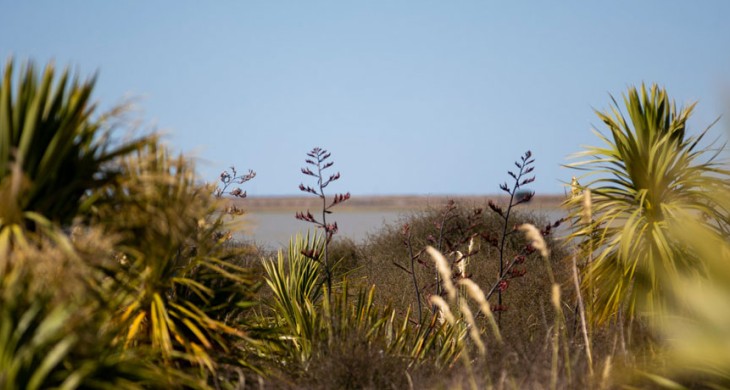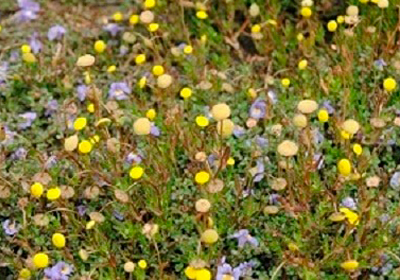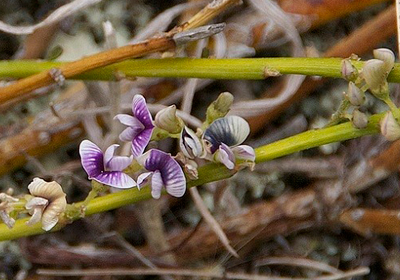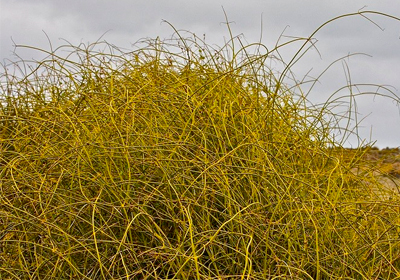What's growing on the lakeshore?
Te Waihora/Lake Ellesmere shoreline vegetation can be classified into three major groups:
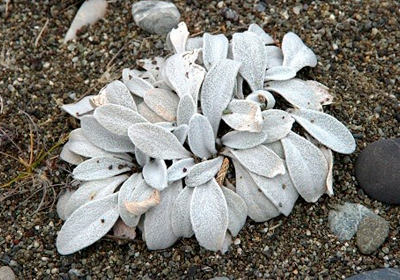 low elevation, lake edge vegetation that is frequently submerged by the brackish lake water for example native musk herbfield
low elevation, lake edge vegetation that is frequently submerged by the brackish lake water for example native musk herbfield- higher elevation, (occasionally submerged) lake edge saltmarsh vegetation such as glasswort herbfield and sea rush rushland
- freshwater wetland species, like harakeke/flax and raupō/bullrush, found in the vicinity of freshwater inflows and springs.
Types of plant species for each:
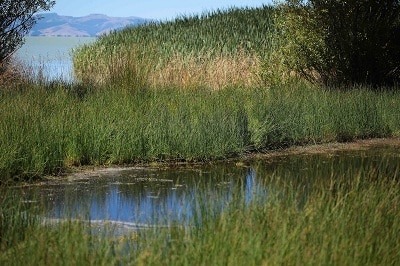 Low elevation, lake edge vegetation is made up entirely of native plant species.
Low elevation, lake edge vegetation is made up entirely of native plant species.- Higher elevation, lake edge saltmarsh vegetation generally contains a mix of native and exotic plant species.
- Freshwater, wetland vegetation also contains a mix of native and exotic plants. However, in the absence of control, introduced species like willows can dominate lakeshore freshwater wetlands.
Although relatively small in area, lakeshore freshwater wetlands contain some rare and unusual species, including a native orchid and giant umbrella sedge.
Other flora species
Greenpark Sands an extremely rare habitat
Greenpark Sands is a nationally important area as it is the most extensive example of an extremely rare habitat type in Aotearoa - the saline lagoon margin on sandy soil. The Sands are more than 1km wide when the lake level is low and extend along 13 kilometres of the eastern lakeshore. The lower-elevation sand flats have a diverse assemblage of native wetland plants, from salt-loving halophytes such as glasswort to species like arrow grass that you may also find in freshwater wetlands.
Te Waihora/Lake Ellesmere lakeshore wetland vegetation was mapped following surveys carried out in the early 1980s, 2007 and 2017. Fourteen broad vegetation types were identified from these surveys.
Lakeshore wetland vegetation types were categorised by habitat (brackish wetland/freshwater wetland/dryland) and by canopy composition (native/exotic/mixed native-exotic).
Between the 1982 survey and 2007 survey there was approximately a 100 ha increase in total area of freshwater wetland vegetation and a corresponding decline in extent of brackish wetland vegetation on the lakeshore. However, following the 2017 survey, this trend had reversed.
Along its southern shore, Te Waihora/Lake Ellesmere is separated from the sea by Kaitorete Spit. As well as native lakeshore wetland vegetation, the Spit’s coastal dune and terrestrial dryland habitats also support native plants.

